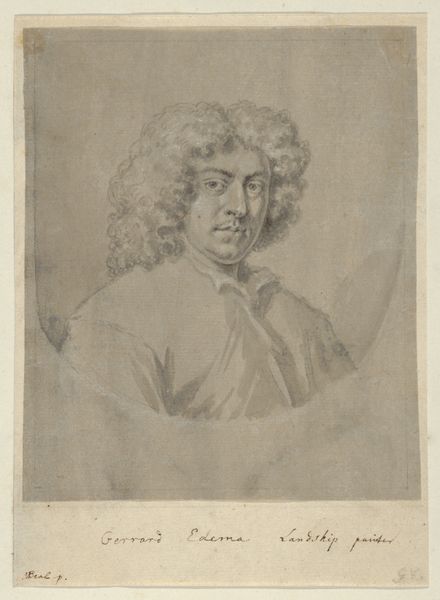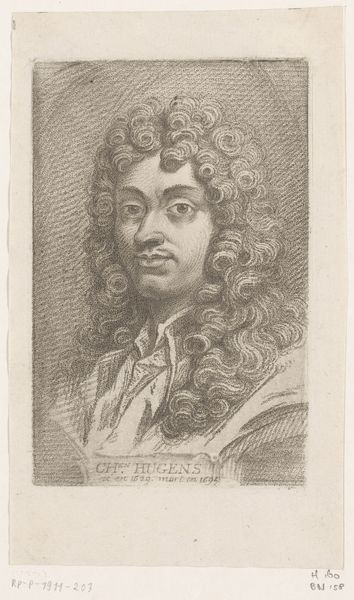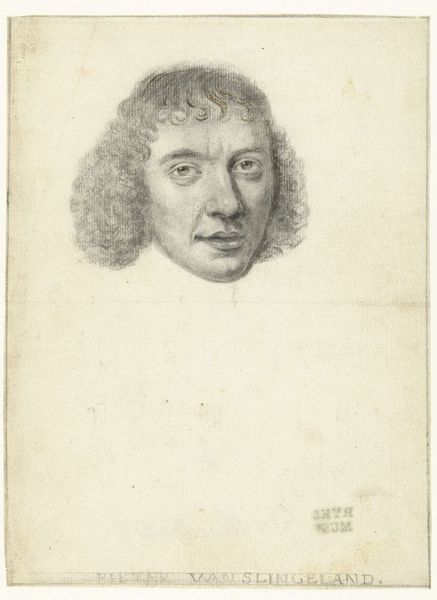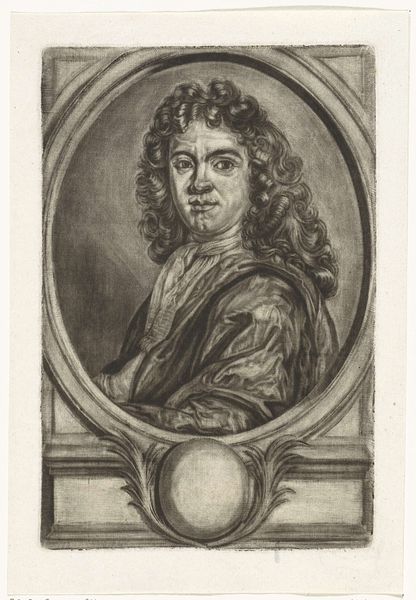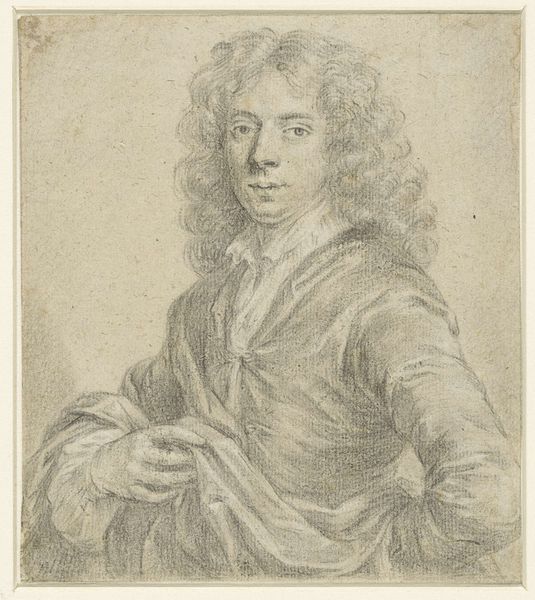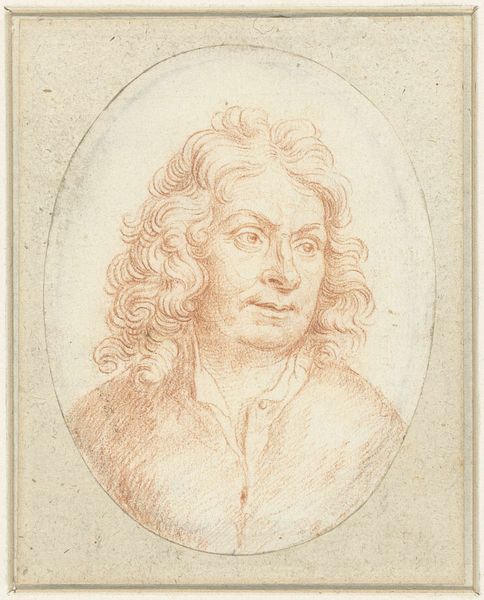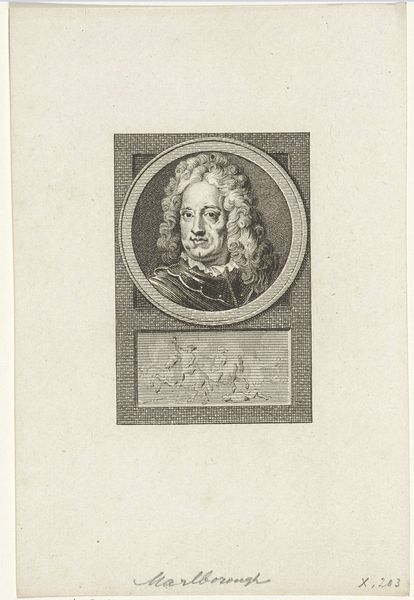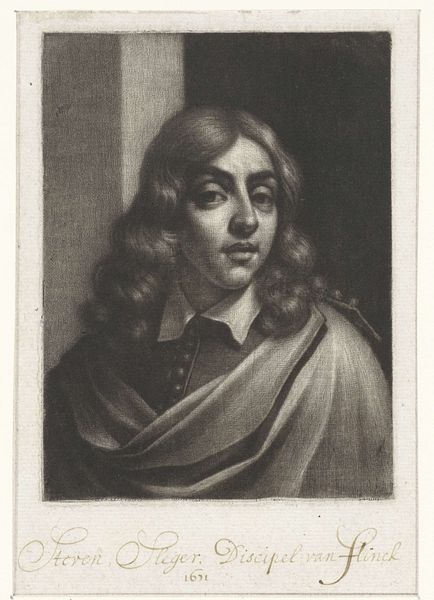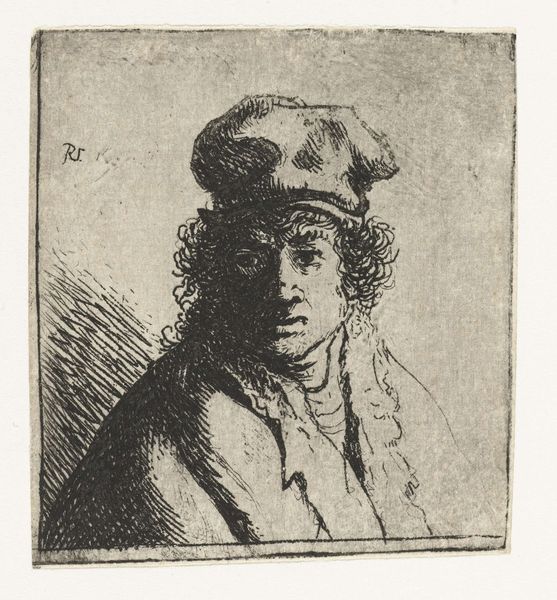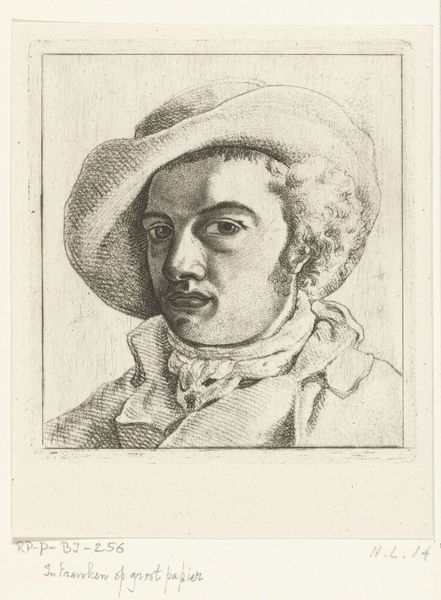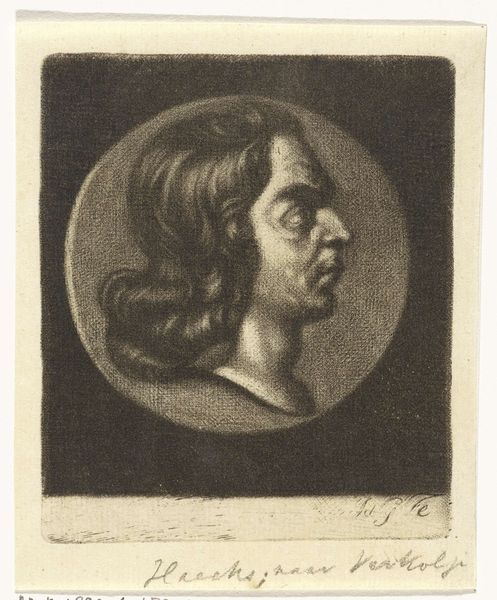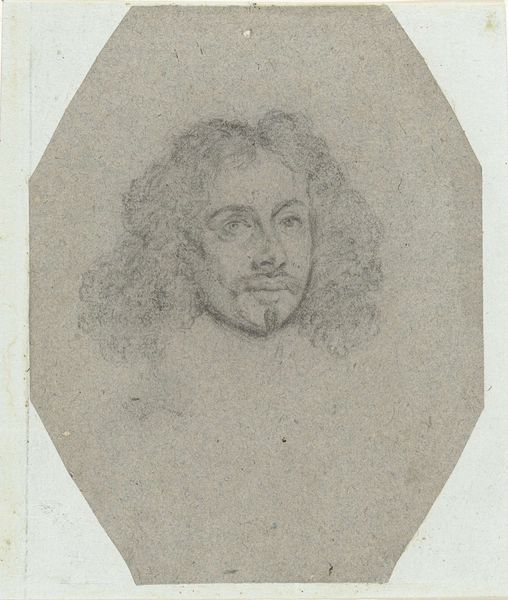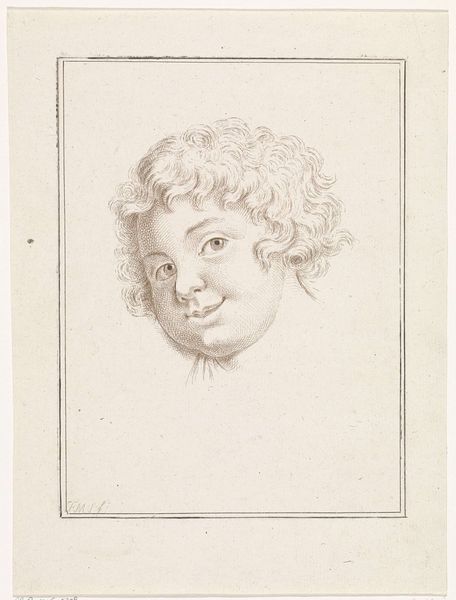
engraving
#
portrait
#
self-portrait
#
baroque
#
old engraving style
#
line
#
engraving
Dimensions: height 117 mm, width 100 mm
Copyright: Rijks Museum: Open Domain
Editor: My immediate impression is of lightness and delicacy; the hatching feels so ethereal. Curator: Indeed. This is Jean-Étienne Liotard's self-portrait, circa 1730, currently residing here at the Rijksmuseum. It’s an engraving, and look at the detail achieved solely through line work! Editor: It’s a striking piece. Engraving requires meticulous labour. Can you imagine the intense concentration needed to achieve such a delicate and intricate image on that metal plate? The sheer manual effort speaks volumes. And consider the paper, the history held in these aging fibres, each mark is like a scar earned during its creation. Curator: The formal composition is also compelling; Liotard masterfully balances light and shadow. The lines create depth and volume. The subtle modulation suggests form through variations in the density and direction of these etched lines. Editor: Absolutely. Each stroke made directly affects the surface, a record of force and skill, reflecting both artistic intent and physical constraints. Where was the plate made, the tools sharpened? Every impression leaves traces on the materials used; labour becomes embedded in art. Curator: Looking closely at the face itself, we see a captivating, somewhat elusive expression. Liotard directs his gaze slightly off-center, lending an air of introspection and perhaps, even vulnerability. The lines around the eyes, subtly etched, give life to this moment captured in ink. Editor: One begins to consider not just the aesthetics but the material conditions of artmaking, what would have driven Liotard to create self-portraits, how this portrait captures not just an image, but reveals an historical connection to manual work and tools long since handled. Curator: It prompts me to admire Liotard's technical skill and refined execution of line and form. Editor: And I’m left reflecting on how art binds together skill, intention, materials, and above all the act of labour and how historical materials have become transformed with the making.
Comments
No comments
Be the first to comment and join the conversation on the ultimate creative platform.
